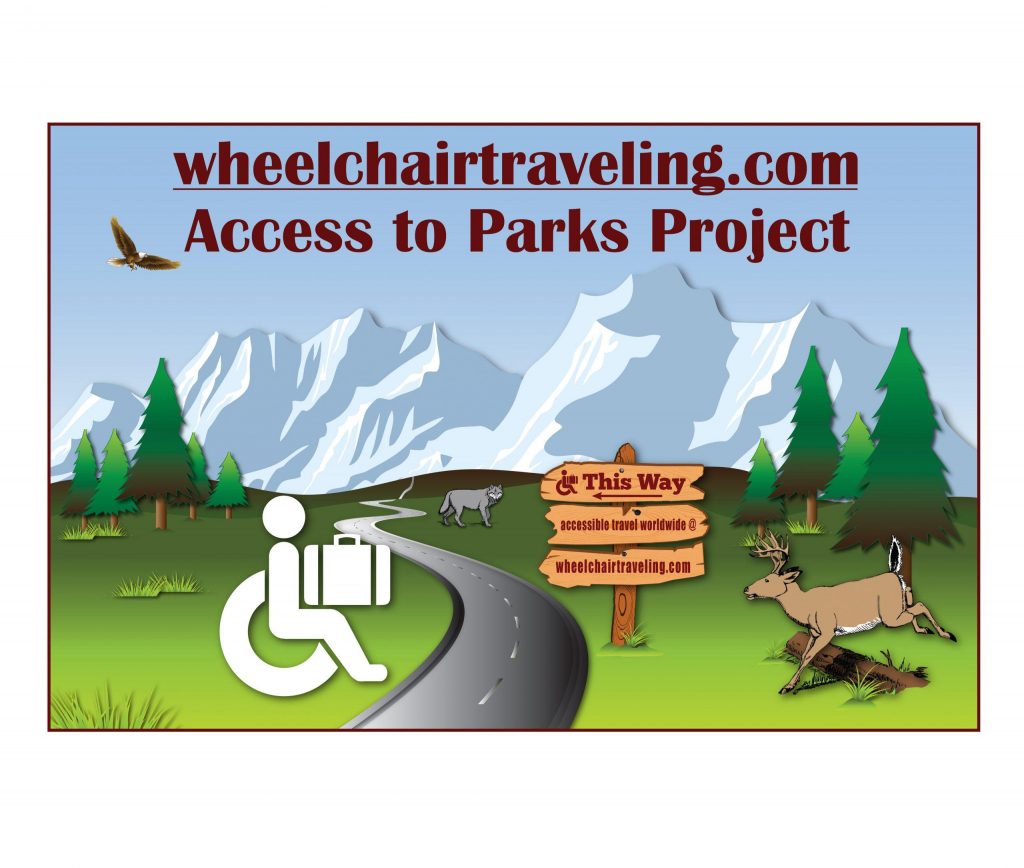Everybody needs beauty as well as bread, places to play in and pray in, where nature may heal and give strength to body and soul alike.John Muir
Introduction
Being able to get outdoors and breathe fresh air is essential to life while promoting and protecting native, natural wildlife. In the United States, the Architectural Barriers Act (ABA) are the guidlines for parks when creating accessible outdoor recreation. Other parks around the world, some with no such laws, have created access to nature using the principles of universal design.
The United Nations reported that a billion people worldwide have a disability with control of $1 trillion annual income. This is the largest minority, and growing, with people who have family members, friends, and business associates that accompany them on outings to accessible places. Everyone needs fresh air, walks to clear their heads, and activities to get their hearts pumping. 20% of the oxygen you breathe in is used by your brain to function; fresh air provides more clarity to the brain while you operate. Serotonin is also released into the blood, optimizing the body on a cellular level, and of course, fresh air is great for the lungs. In nature, the air is exceptional, “…one receives far more than he seeks” (John Muir). The natural world is a healing mechanism for the human body, which needs to be accessible to all.
Maintaining parks and keeping them protected and safe is not free. Local parks are often free to use, while most regional, state, and national parks charge a fee. Many state parks have 20-50% off discounted passes for those needing accessibility, and a National Park Access Pass sometimes equates to free entry. This pass is restricted to national parks, but there are also national monuments, landmarks, recreation areas, forests, wetlands, refugees, etc. that may or may not charge an entrance fee with or without the special pass. If a fee is required, then reasonable access is assumed but this is not always the case, so it’s important to inquire about the level of access before paying.
Many parks are trying to improve accessibility for all visitors, but more understanding is needed on what can be done and what works. The Access 2 Parks Project includes comprehensive details on what does and does not work in parks. This information is based on a decade of compiling priceless feedback from thousands of people as well as personal observation and experience. A reason for this report is to show how to be mindful of the experience for all visitors. All people need access to what the park has to offer, such as hiking trails, bathrooms, cooking grills, and water, and a way of finding them. Independent access is important. Don’t assume someone else is there to help with everything.
Overview
Focus on the experience because all visitors come enjoy the park!
- Hiking in nature on a paved or unpaved trail; not all accessible trails need to be asphalt.
- Overlooks or Viewpoints of a park’s natural features or points of interest.
- Benches: A barrier-free path to the bench, plus space next to the bench for a wheelchair, often found along a trail, by an overlook or viewpoint, or in the park in general.
- Picnic tables, drinking fountains, and trash cans accessible by wheelchair.
- A reasonable number of accessible parking spaces, including a van accessible.
- Bathrooms, because nature calls.
- Camping with access to campground and campsite features as well as cabins, yurts, glamping, and more.
- Extras: Automatic doors at the visitor center, horse loading platform, fishing piers, archery, boat docks, beach wheelchairs, ranger-led programs, etc.
- Signage/Information: Don’t make visitors guess and have to figure everything out; let people know what’s accessible on the road signs, on in-park maps, and on the website. If there’s a lot, have handouts or barcodes to scan at the park.
- Involvement: When creating more access in a park, ask the community and get real/valuable feedback from people who are deaf/blind or have limited mobility.
Terminology
In this report, the word “Park” encompasses all outdoor areas made available to the public, along with affiliated partners, and managed by local, regional, state, or federal entities, including but not limited to forests, wetlands, wildlife refuges, monuments, landmarks, historical sites, recreation areas, and so on.
The word “accessible” means different things to different people and government entries, even over something like “accessible parking.” For general understanding purposes, parks can have a page or a section using this word if only to group certain information. However, refrain from using the word accessible in describing specific features, and instead, use objective language to explain what is. Provide people with more information than just an “accessible information” link, which leads to a page that only says, “The trail, parking lot, and bathroom are accessible.” People are looking to know what’s possible to plan an experience.
With modern equipment, there’s a lot that a person can physically do. A “disabled” woman hiked the Appalachian Trail, yet no local, state, or federal standard would classify this trail as “accessible.” People in scooters or wheelchairs with power assistance have achieved steep climbs, even on rocky or non-accessible trails. If people think they can, they will; it’s basic human nature, so let’s not limit people. Instead, providing more objective information about trails, allows people of all abilities to make their own choice.








